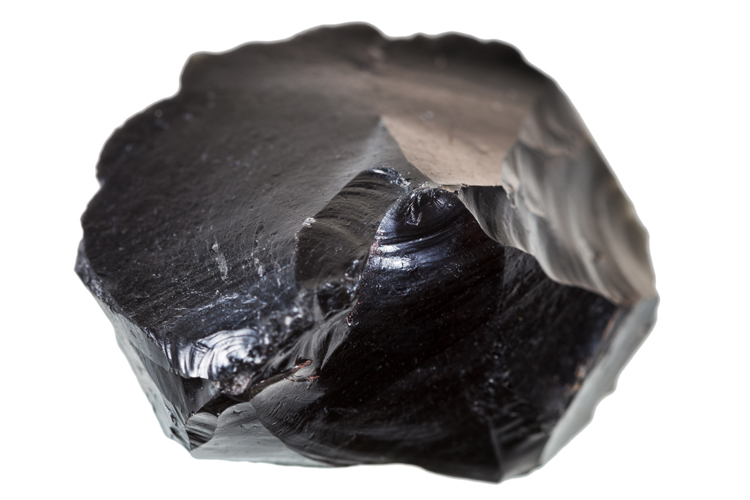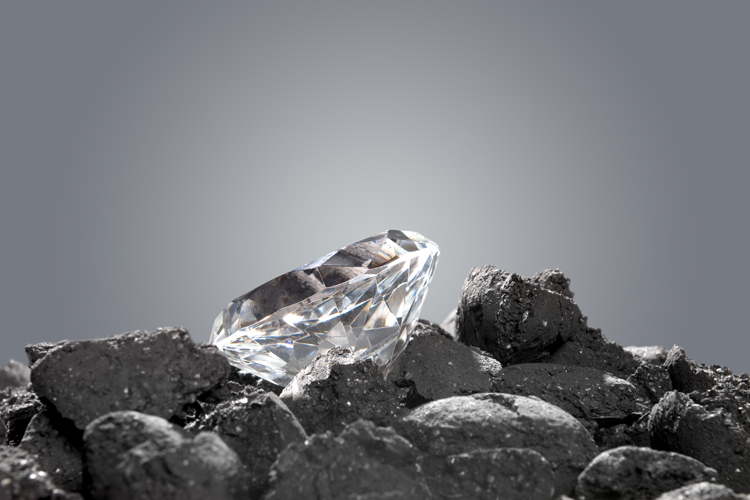Obsidian is a natural volcanic glass like rhyolite.
Technically, it is not a gemstone – it is considered a rock. Obsidian is also called volcano glass and is frequently found in present and former volcanic activity areas.
Its composition is highly complex and not classified as a true mineral.
Its shiny and black surface is part of our everyday world and is mainly used in the jewelry industry and homeware products.
People used obsidian in ancient times to make jewelry and practical objects for carving, such as knives.
Surgeons still use obsidian knives instead of blades in eye and cardiac operations. Also, you can find the rock in chess pieces and piano keys.
It has a pure form and a dark body color because of magnesium and iron.
Types of Obsidian
It features several attractive varieties, including:
- Apache Tear. It is also known as smoky obsidian or marekanite. It is a gentle type found primarily in Mexico and the American Southwest in the form of small, rounded pebbles of obsidian with a black and opal appearance. It can sometimes be translucent brown. Tradition says the Apache tear forms from the tears of Native American women;
- Rainbow Obsidian. It is also called heaven eye. The color of rainbow obsidian is deep brown or black. But when exposed to light, iridescent bands of red, gold, violet, and blue can be spotted. It is gentler than the black type;
- Black Obsidian. It is pure and glossy black obsidian. People believed it was the “Warrior of Truth.” Throughout history, it was a powerful talisman used for spirituality purposes;
- Snowflake Obsidian. It is a black obsidian with small, white, clustered crystal inclusions. It is a stone of purity;
- Mahogany Obsidian. It is also called mountain mahogany. It’s a combination of black and brown obsidian with spotty patterns. It contains a high iron concentrate;
- Sheen Obsidian. It features microscopic bubble patterns that make obsidian sheen. People believe the golden and silver types change the course of diseases, remove toxins from our bodies, and reduce pain from muscle spasms.
The Stone of Truth
Obsidians can be found in many countries, including Greece, Mexico, Peru, Azerbaijan, the US, Armenia, Guatemala, and Chile.
According to historical reports, Obsius, a Roman, discovered a similar stone in Ethiopia and gave the name to the volcanic rock.
The “stone of truth” symbolized justice for years. It had an important place in the Mayan Empire. They believed that it could show the future.
Also, Mayan merchants exchanged it as a form of currency.
The Aztecs made a balm using obsidian as a powder to curve scars.
The Greeks from Milos Island also understood its value and became rich by doing business with it. After all, who can deny its value?
Many people still use this volcanic glass for healing and reducing muscle and arthritis pain. Some also believe that it can back up the treatment of colon irritations and gastro problems.
The Brooklyn Museum had various pieces of obsidians in the exhibition of “Body Parts: Ancient Egyptian Fragments and Amulets.”
The rock’s alluring natural dark and glossy color makes it fashionable and attractive for people of every age and gender.
The fashionable, attractive, and mysterious lava rock makes your jewelry unique.
Even if it is volcanic glass, using obsidian as an accessory will always fit your glamorous style.
But keep in mind that its price varies according to size.
Obsidian | Physical Properties
Color: Black, silver, gold, reddish-brown, rainbow
Fracture: Conchoidal
Luster: Vitreous
Transparency: Transparent to opaque
Refractive index: 1.48-1.51 (usually 1.49)
Density: 2.25-3.00
Cleavage: None




